Imagine a classroom where students can explore the surface of Mars, dissect a frog without the mess, or walk through ancient Rome—all without leaving their seats. This isn’t a scene from a sci-fi movie; it’s the potential of augmented reality (AR) in education. AR is transforming the way students learn by overlaying digital information onto the real world, making lessons more interactive and engaging. Let’s dive into how this technology is revolutionizing education.
What is Augmented Reality?
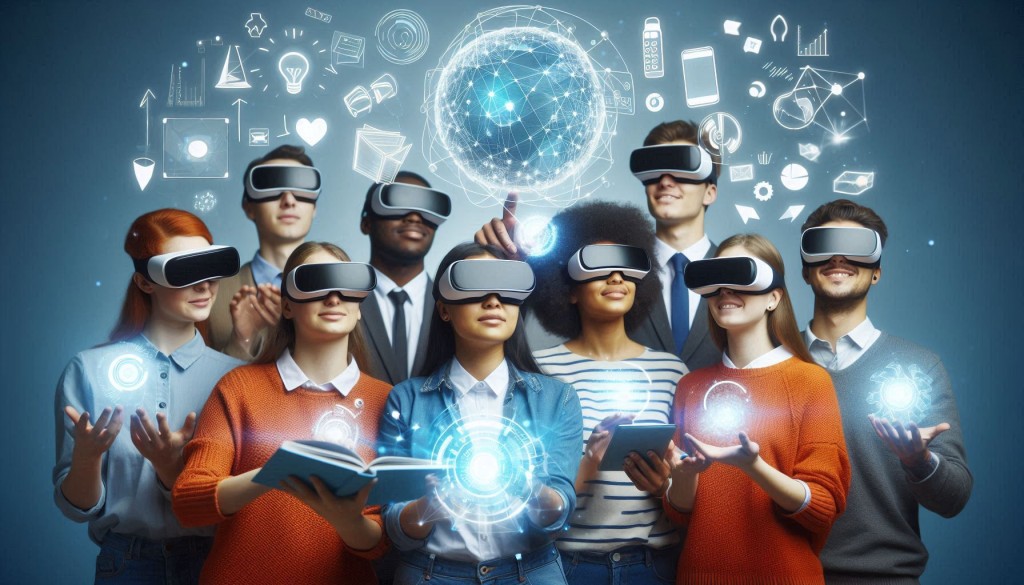
Augmented reality is a technology that superimposes digital content—such as images, sounds, or text—onto the real world through a device like a smartphone, tablet, or AR glasses. Unlike virtual reality, which creates a completely immersive digital environment, AR enhances the real world by adding digital elements to it. Think of it as adding a layer of magic to your everyday surroundings.
For example, imagine pointing your phone at a historical landmark and seeing information about its history pop up on your screen. Or, consider a biology student who can see a 3D model of a cell floating in front of them, which they can rotate and explore in detail. AR makes learning more interactive and fun, turning abstract concepts into tangible experiences.
How Does AR Work?
AR technology uses a combination of hardware and software to function. The hardware includes cameras, sensors, and displays, while the software involves algorithms that recognize and track objects in the real world. When you point your device at an object, the software identifies it and overlays relevant digital content on your screen.
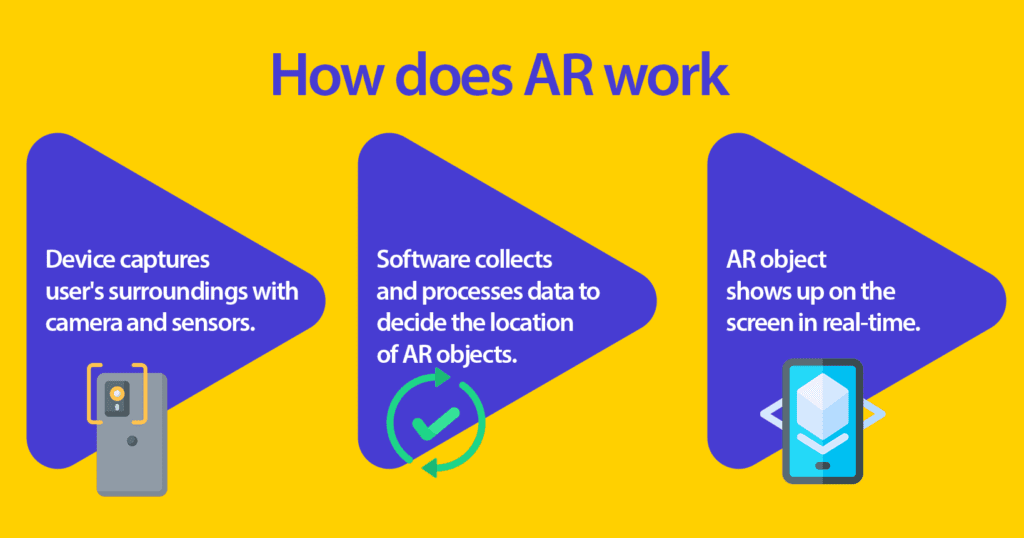
It’s like having a digital tour guide that provides information and context as you explore the world around you. This seamless integration of digital and physical worlds opens up endless possibilities for education, making learning more dynamic and engaging.
How Can Augmented Reality Improve Education?
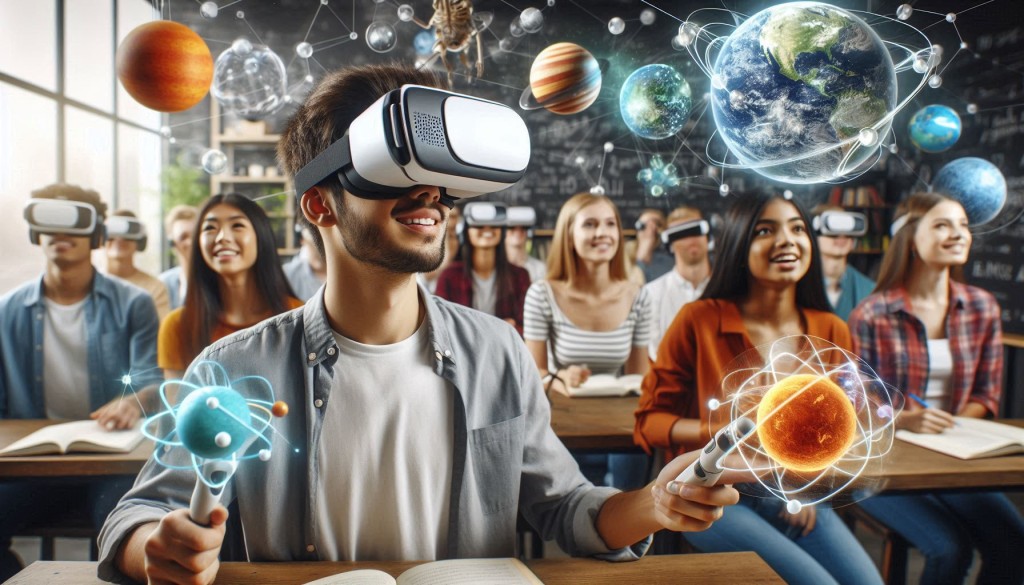
AR has the potential to revolutionize education by making learning more interactive, engaging, and accessible. Traditional teaching methods often rely on textbooks and lectures, which can be dry and uninspiring. AR, on the other hand, brings lessons to life by allowing students to interact with digital content in real-time.
Enhanced Engagement
One of the biggest advantages of AR is its ability to capture students’ attention. Interactive lessons are more engaging than traditional methods, making it easier for students to stay focused and retain information. For example, a history lesson about ancient Egypt can be transformed into an interactive experience where students can explore a virtual pyramid and learn about its construction and significance.
Improved Understanding
AR can also help students understand complex concepts by providing visual and interactive representations. For instance, a physics lesson on electromagnetism can be enhanced with AR simulations that show how magnetic fields interact with electric currents. This hands-on approach makes abstract concepts more concrete and easier to grasp.
Accessibility and Inclusivity
AR can make education more accessible for students with different learning styles and abilities. For example, students with dyslexia can benefit from AR apps that overlay text with visual aids, making reading easier. Similarly, students with hearing impairments can use AR to access sign language translations of spoken content.
How Can Augmented Reality Help Students?
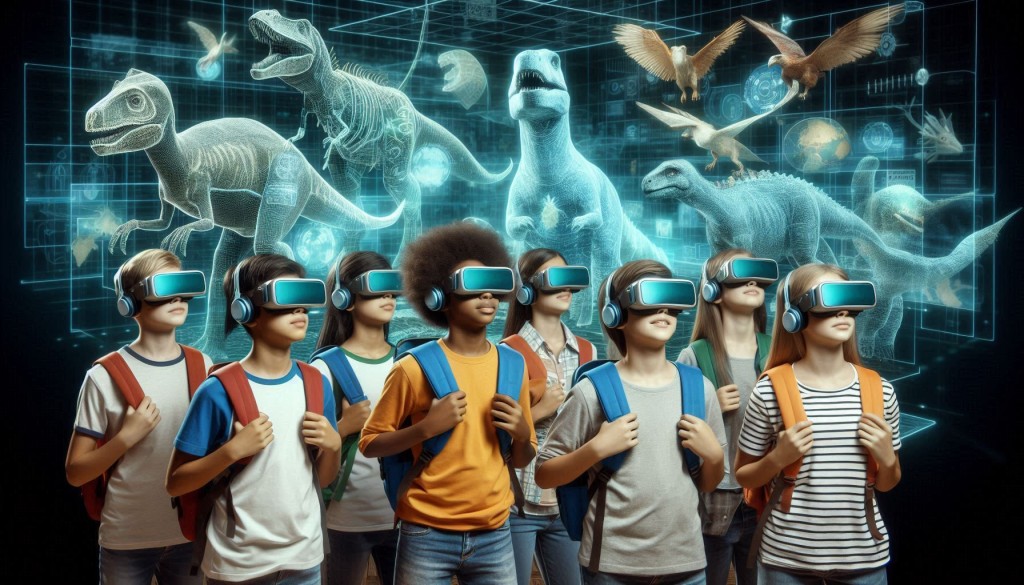
AR offers numerous benefits for students, from enhancing their learning experience to developing essential skills. By making lessons more interactive and engaging, AR can help students stay motivated and achieve better academic outcomes.
Active Learning
AR encourages active learning by allowing students to interact with digital content. Instead of passively listening to a lecture, students can engage with the material, ask questions, and explore concepts in depth. This hands-on approach promotes critical thinking and problem-solving skills.
Collaboration and Communication
AR can also foster collaboration and communication among students. Group projects can be enhanced with AR tools that allow students to work together on interactive simulations or virtual models. This collaborative approach helps students develop teamwork and communication skills, which are essential for success in the modern world.
Personalized Learning
AR can provide personalized learning experiences tailored to each student’s needs and abilities. For example, AR apps can adapt to a student’s learning pace, providing additional support or challenges as needed. This personalized approach ensures that all students can achieve their full potential.
Augmented Reality for Different Student Age Groups

Ages 4-7
For younger students, AR can make learning fun and engaging. Educational apps can turn everyday objects into interactive learning tools. For example, a coloring book can come to life with animated characters and stories, making learning to read and write more enjoyable.
Ages 7-11
As students get older, AR can be used to enhance subjects like science and history. Interactive simulations can help students understand complex concepts, such as the water cycle or the solar system. AR can also make field trips more educational by providing additional information and context.
Ages 11-14
For middle school students, AR can be used to explore more advanced topics. For example, a biology lesson can be enhanced with 3D models of cells and organs, allowing students to explore their structure and function in detail. AR can also be used to create virtual labs, where students can conduct experiments without the need for expensive equipment.
Ages 14-16
High school students can benefit from AR by exploring subjects in greater depth. For example, a chemistry lesson can be enhanced with AR simulations that show how molecules interact. AR can also be used to provide real-world applications of academic concepts, such as using geometry to design a virtual building.
Ages 16-18+
For older students, AR can be used to prepare for college and careers. For example, AR can provide virtual internships, where students can gain hands-on experience in their chosen field. AR can also be used to enhance vocational training, such as providing interactive simulations for medical or engineering students.
Post-Secondary Students
For post-secondary students, augmented reality (AR) is a game-changer, bringing a whole new level of immersion and interaction to education. AR technology allows students to engage with complex concepts in a way that’s both visually stunning and highly practical. Imagine exploring the intricate workings of a jet engine by virtually stepping inside it, or conducting a detailed analysis of architectural structures by interacting with 3D models that you can rotate, scale, and even deconstruct—right in the middle of a lecture.
AR also plays a crucial role in bridging the gap between theoretical knowledge and real-world application. For instance, engineering students can use AR to simulate and troubleshoot systems without the need for physical prototypes, saving time and resources while enhancing understanding. Medical students, on the other hand, can practice surgeries in a risk-free virtual environment, where they can make mistakes and learn from them without real-world consequences.
Beyond the classroom, AR offers opportunities for virtual internships and hands-on training that were previously unimaginable. Students can gain practical experience in fields like medicine, engineering, and architecture through AR simulations that mirror real-world scenarios, giving them a head start in their careers. This technology enables them to develop skills that are directly applicable in the workforce, making them more competitive candidates in their respective fields.
In essence, AR in post-secondary education transforms learning from a passive to an active experience, allowing students to engage deeply with their studies. It’s a powerful tool that not only enhances comprehension but also prepares students for the complexities of their future careers by providing a hands-on, immersive learning environment.
Implementing Augmented Reality in The Classroom
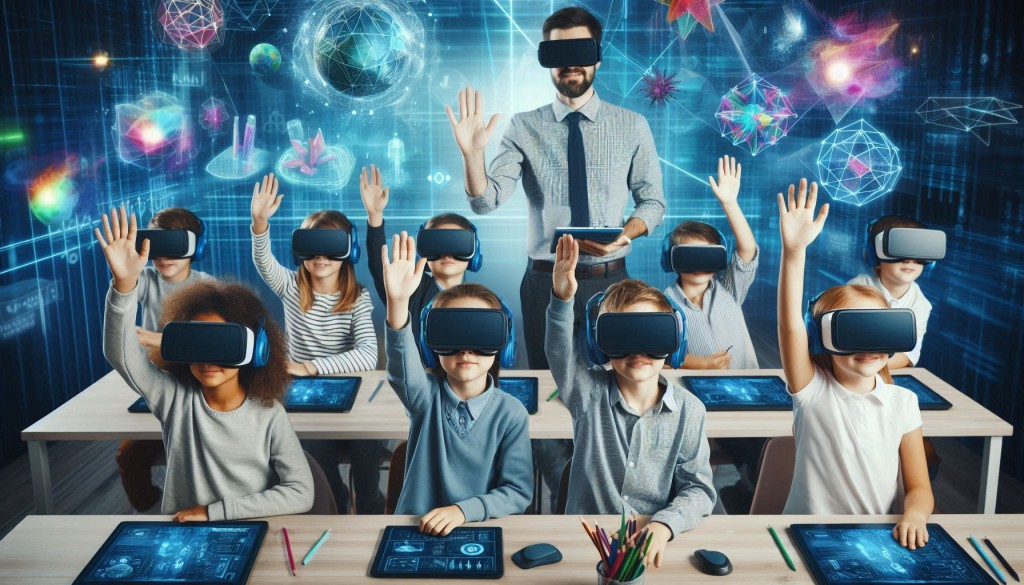
Integrating AR into the classroom requires careful planning and consideration. Educators need to ensure that AR tools align with curriculum goals and enhance the learning experience. Here are some tips for successfully implementing AR in the classroom.
Start Small
Begin by incorporating AR into a few lessons or activities. This allows you to test the technology and see how it fits into your teaching style. Gradually expand its use as you become more comfortable with the tools and see the benefits for your students.
Choose the Right Tools
There are many AR tools and apps available, so it’s important to choose ones that align with your curriculum and teaching goals. Look for tools that are easy to use and provide clear educational benefits. Consider seeking recommendations from other educators or reading reviews to find the best options.
Provide Training
Ensure that both teachers and students are comfortable using AR tools. Provide training sessions and resources to help them understand how to use the technology effectively. This can include tutorials, workshops, or online courses.
Encourage Exploration
Allow students to explore AR tools and content on their own. Encourage them to experiment and discover new ways to use the technology. This can foster creativity and innovation, helping students develop important skills for the future.
Augmented Reality in Education: Resources and Tips

There are many resources available to help educators integrate AR into their classrooms. Here are some tips and tools to get you started.
Educational Apps
There are numerous AR apps designed specifically for education. Some popular options include Google Expeditions, which offers virtual field trips, and Quiver, which brings coloring pages to life. Explore different apps to find ones that align with your curriculum and teaching goals.
Online Communities
Join online communities of educators who are using AR in their classrooms. These communities can provide valuable insights, tips, and support. Platforms like Reddit, Facebook, and LinkedIn have groups dedicated to AR in education.
Professional Development
Consider attending workshops, conferences, or online courses focused on AR in education. These events can provide valuable training and networking opportunities. Look for organizations that offer professional development for educators, such as ISTE or EdTechTeacher.
Grants and Funding
There are grants and funding opportunities available to help schools implement AR technology. Research options from government agencies, educational foundations, and private companies. Applying for grants can help offset the costs of purchasing AR tools and resources.
Conclusion
Augmented reality is not just a shiny new tool in the educational toolkit; it’s a transformative force that’s reshaping how students of all ages learn and interact with the world around them. By turning static lessons into dynamic, interactive experiences, AR engages students in ways that traditional methods simply can’t. It’s like taking the most exciting field trips, where students don’t just observe—they dive into the heart of the subject, exploring and interacting with concepts in real-time.
Moreover, AR’s ability to offer personalized learning experiences ensures that students can learn at their own pace and in ways that resonate with them individually. Whether it’s simplifying complex theories with 3D visualizations or making abstract concepts tangible, AR provides a unique blend of learning and discovery that caters to diverse learning styles.
As educators integrate AR into their classrooms, they’re not just enhancing the learning experience—they’re preparing students for a future where technology and innovation are at the forefront. The ability to interact with and manipulate digital information will be a critical skill in almost every field, and AR is helping to build that foundation early on. This technology is paving the way for a generation of learners who are more engaged, curious, and prepared to tackle the challenges of the modern world.
In essence, AR is much more than just an educational enhancement; it’s a leap forward in how we think about teaching and learning. By embracing this technology, educators are opening up a world of possibilities for their students, fostering not only a deeper understanding of the material but also a passion for learning that will last a lifetime. The future of education is here, and with AR, it’s more exciting, accessible, and innovative than ever before.
Frequently Asked Questions
What is the difference between augmented reality and virtual reality?
Augmented reality (AR) overlays digital content onto the real world, enhancing your surroundings with additional information. Virtual reality (VR), on the other hand, creates a completely immersive digital environment, replacing the real world entirely. Think of AR as adding a layer of magic to your everyday life, while VR transports you to a different world altogether.
Can augmented reality be used for all subjects?
Yes, augmented reality can be used to enhance a wide range of subjects, from science and math to history and art. The key is to find AR tools and apps that align with your curriculum and teaching goals. With the right resources, AR can make any subject more engaging and interactive.
Is augmented reality expensive to implement in schools?
The cost of implementing AR in schools can vary depending on the tools and resources you choose. While some AR apps and tools are free or low-cost, others may require a significant investment. However, there are grants and funding opportunities available to help offset these costs. Researching and applying for grants can make AR more affordable for schools.
Do students need special devices to use augmented reality?
Many AR tools and apps can be used with common devices like smartphones and tablets. However, some advanced AR experiences may require specialized equipment, such as AR glasses or headsets. It’s important to choose tools that are compatible with the devices you have available in your classroom.
How can I get started with augmented reality in my classroom?
Start by researching AR tools and apps that align with your curriculum and teaching goals. Begin with a few lessons or activities to test the technology and see how it fits into your teaching style. Provide training for both teachers and students to ensure they are comfortable using the tools. Gradually expand the use of AR as you become more familiar with its benefits and applications.
